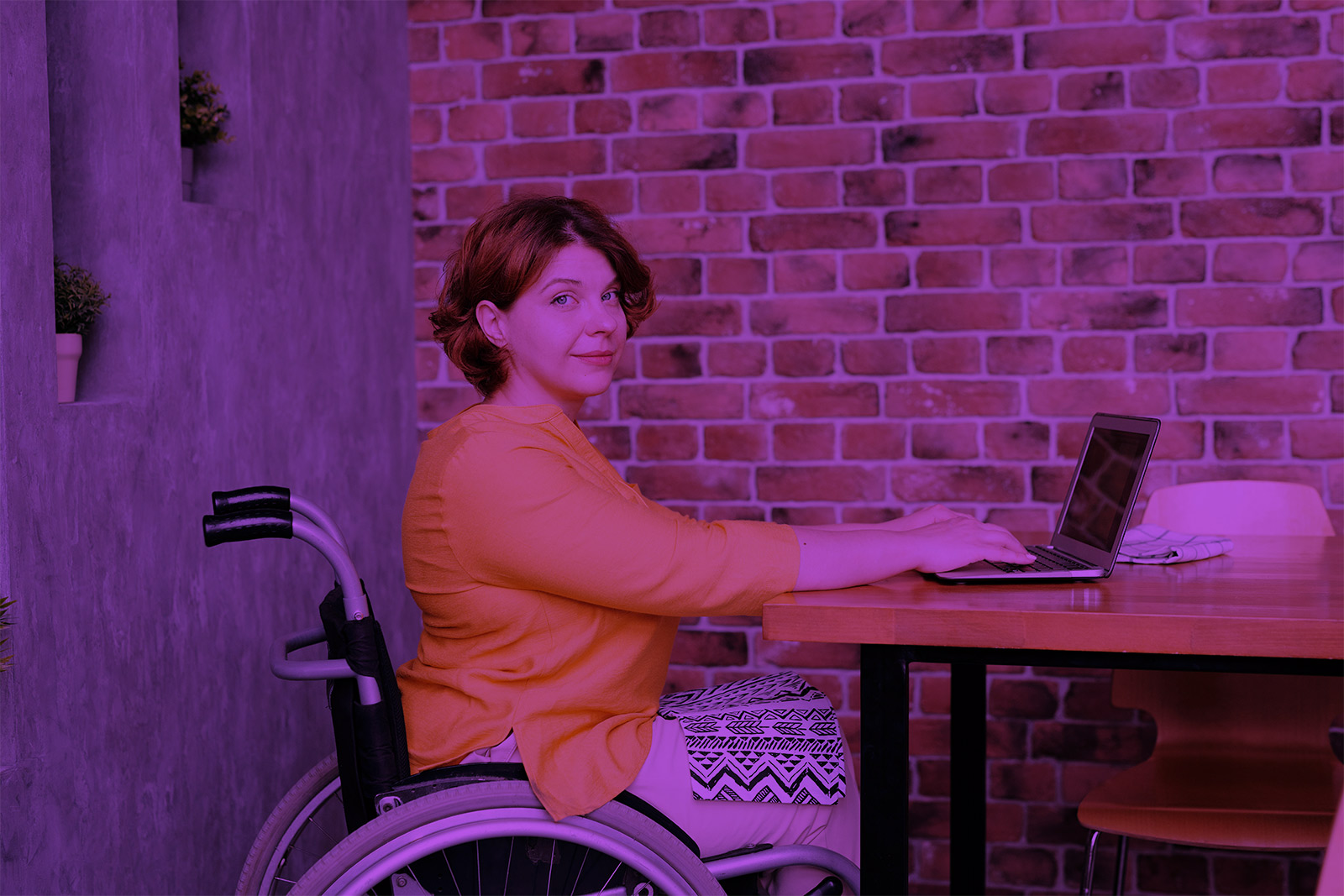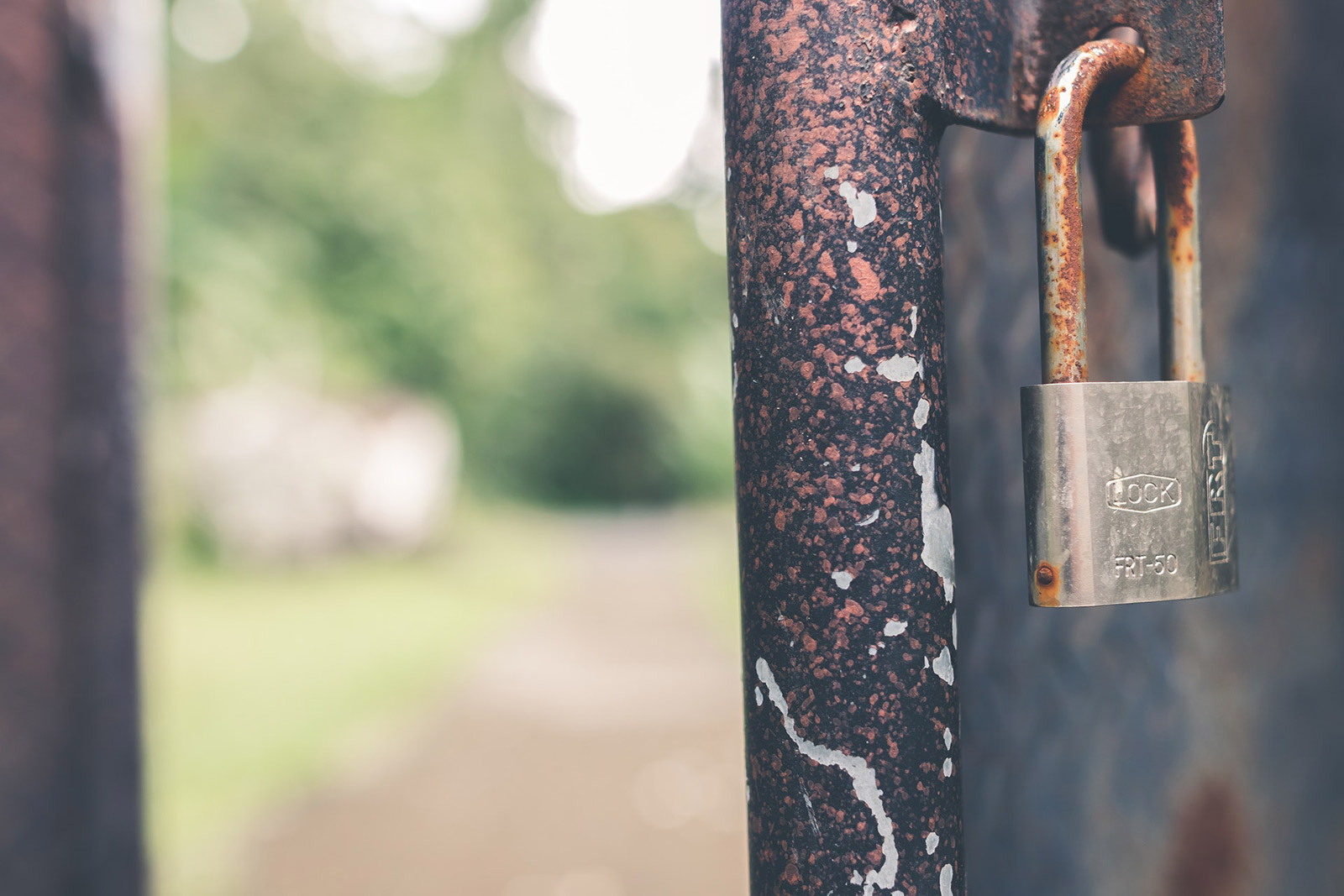Designing for Belonging in Long-term Residents of a Rapidly Changing Community.
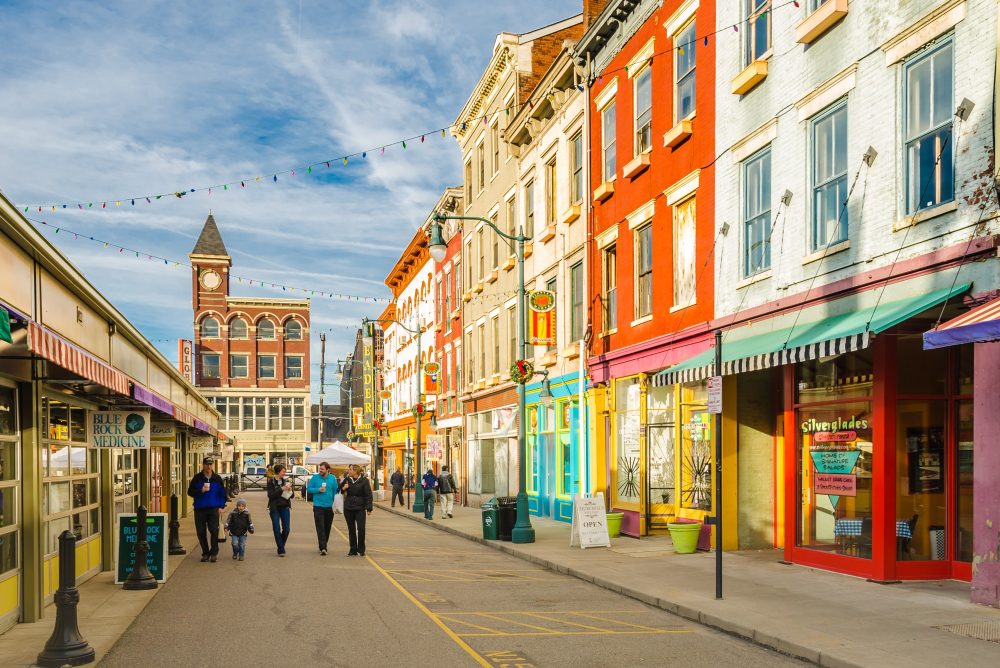
Abstract
Over-the-Rhine is a neighborhood in Cincinnati, OH that is experiencing rapid redevelopment. While the neighborhood has experienced multiple demographic shifts in its history, recent changes are happening at a shocking rate. “In 2010, OTR still had a 72% black community. By 2014 the population of OTR changed to two-thirds white” (Brenneman, 2018). Team JAC2 questioned how these changes in the community are impacting long-term residents’ sense of belonging and developed a suite of design solutions to build relationships in the neighborhood.
Research
The group conducted interviews with a community organizer and a gallery-owner in Over-the-Rhine, video-recorded observations of the neighborhood, and conducted secondary research.
The research revealed that long-term residents want more than their history to be celebrated, they want to be part of the ongoing narrative. In fact, including them by celebrating only their history can send a message that the neighborhood has moved on and no longer has a place for them. We also learned of numerous organizations and programs currently serving the long-term residents as well as exciting projects planned and branded with the new demographic in mind. What appeared to be missing was a bridge connecting the long-term and new residents.
Secondary Research
Our secondary research revealed, “the neighborhood is currently home to Cincinnati’s largest concentration of businesses, social services, and subsidized housing” (Brenneman, 2018). Despite having the largest concentration of subsidized housing in the city, it was also listed on Coldwell Banker’s Luxury Report 2020 as a “place to watch” (Caproni, 2020). This juxtaposition is causing tensions between long-term and new residents, exemplified by the outcry around the 2017 closing of a local playground after deemed problematic to the neighborhood. (John, 2020).
Product Inclusion Principles
Three product inclusion principles were adopted to guide the research, planning, and integration of resources to ensure stakeholder involvement at each stage. The location and individuals targeted in the study guided the design solution. The inclusion principles are:
Everyone is different.
Not everyone is going to want to participate in community change the same way. How can we design customizable solutions that enable long-term residents to feel like an important part of the community’s past, present
and future.
Equal is not always equitable.
Everyone’s needs are not the same and a single design solution will not
serve everyone.
Designing for the minority also benefits the majority.
Designing for long-term residents can have unintended benefits for the
new residents.
Personas
The team developed personas based on our research. Each persona portrays a unique perspective and relationship to the community redevelopment and change. We focused on design solutions that serve Justine, a long-term resident of Over-the-Rhine.
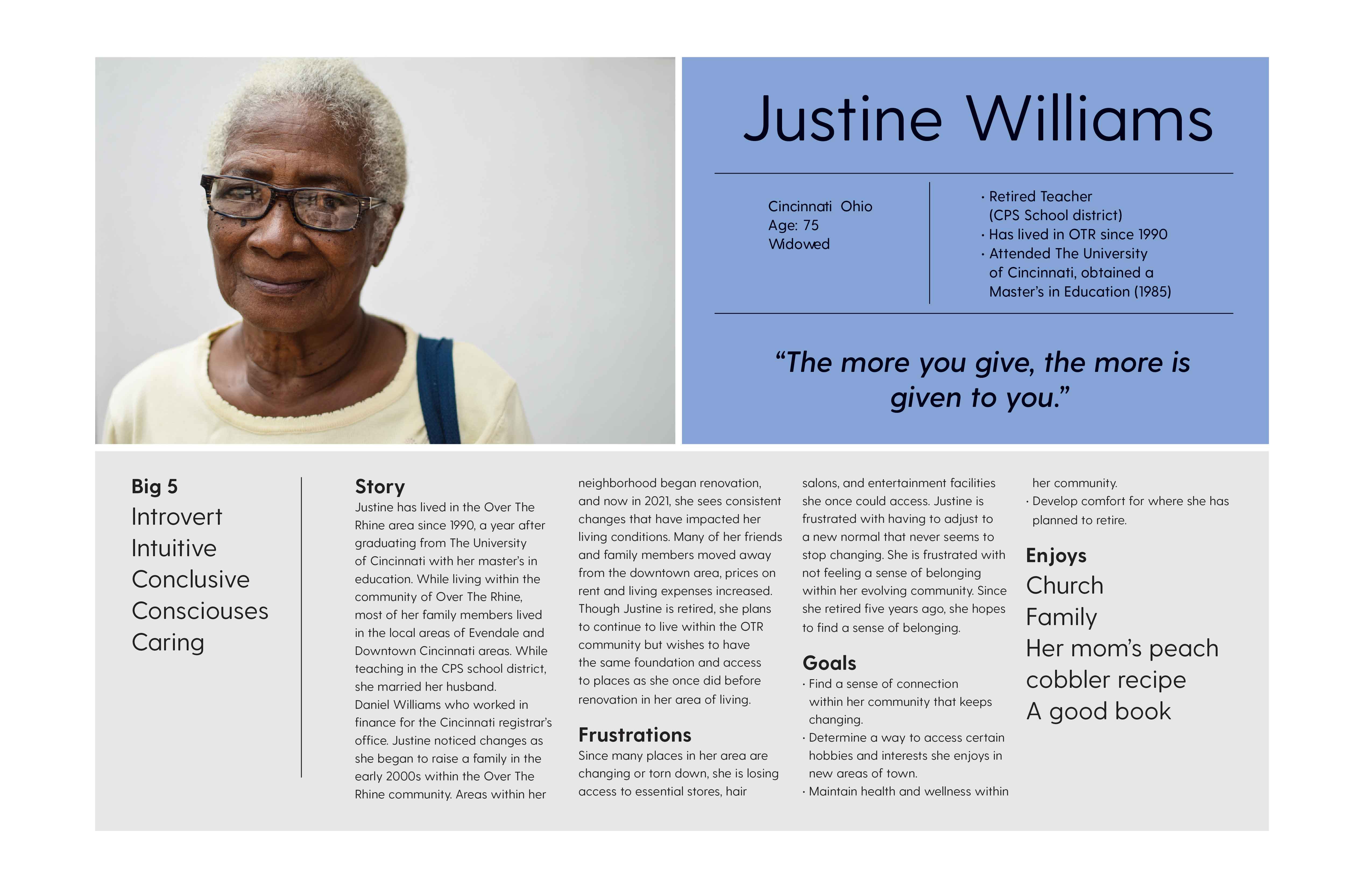
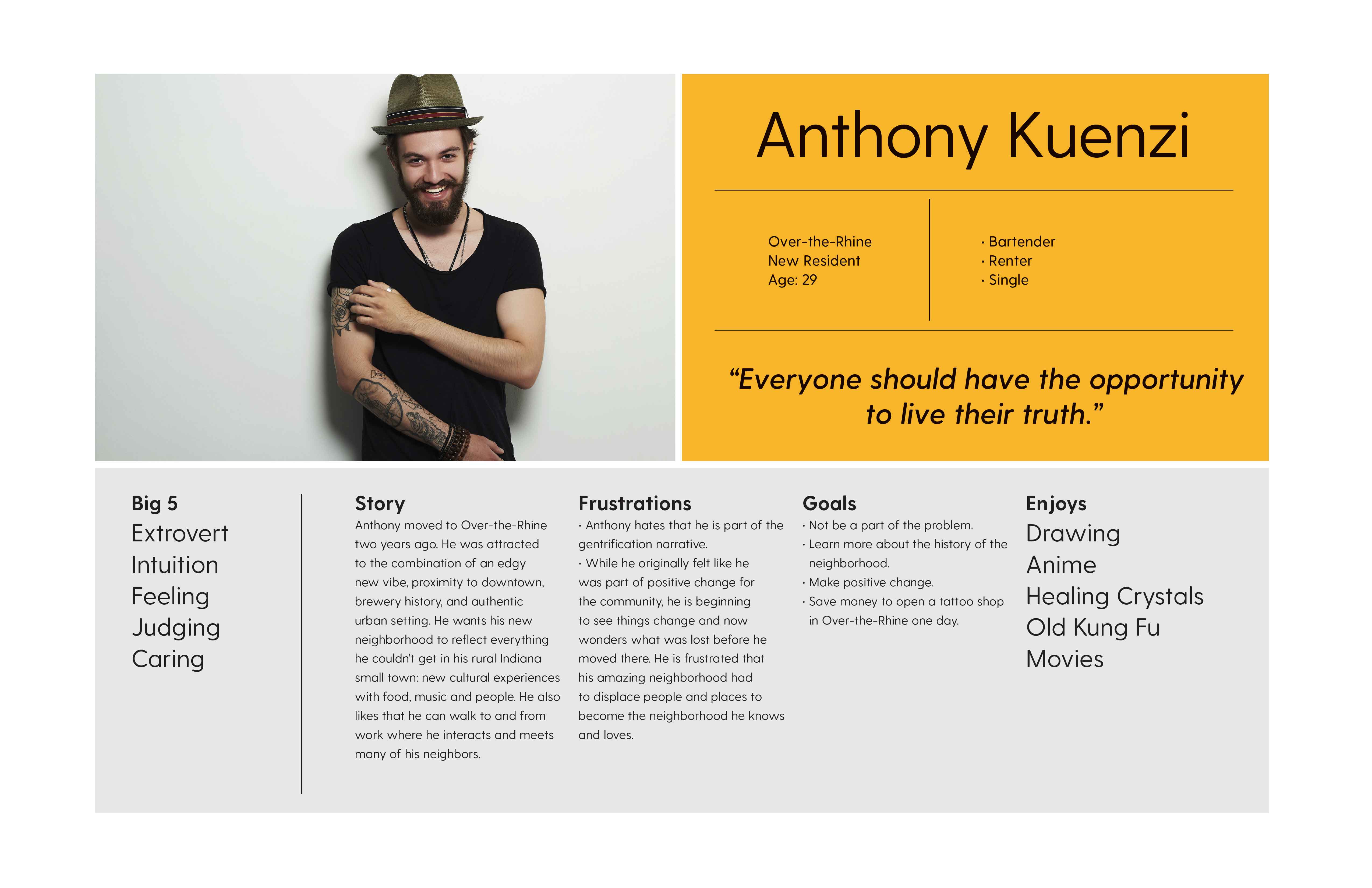
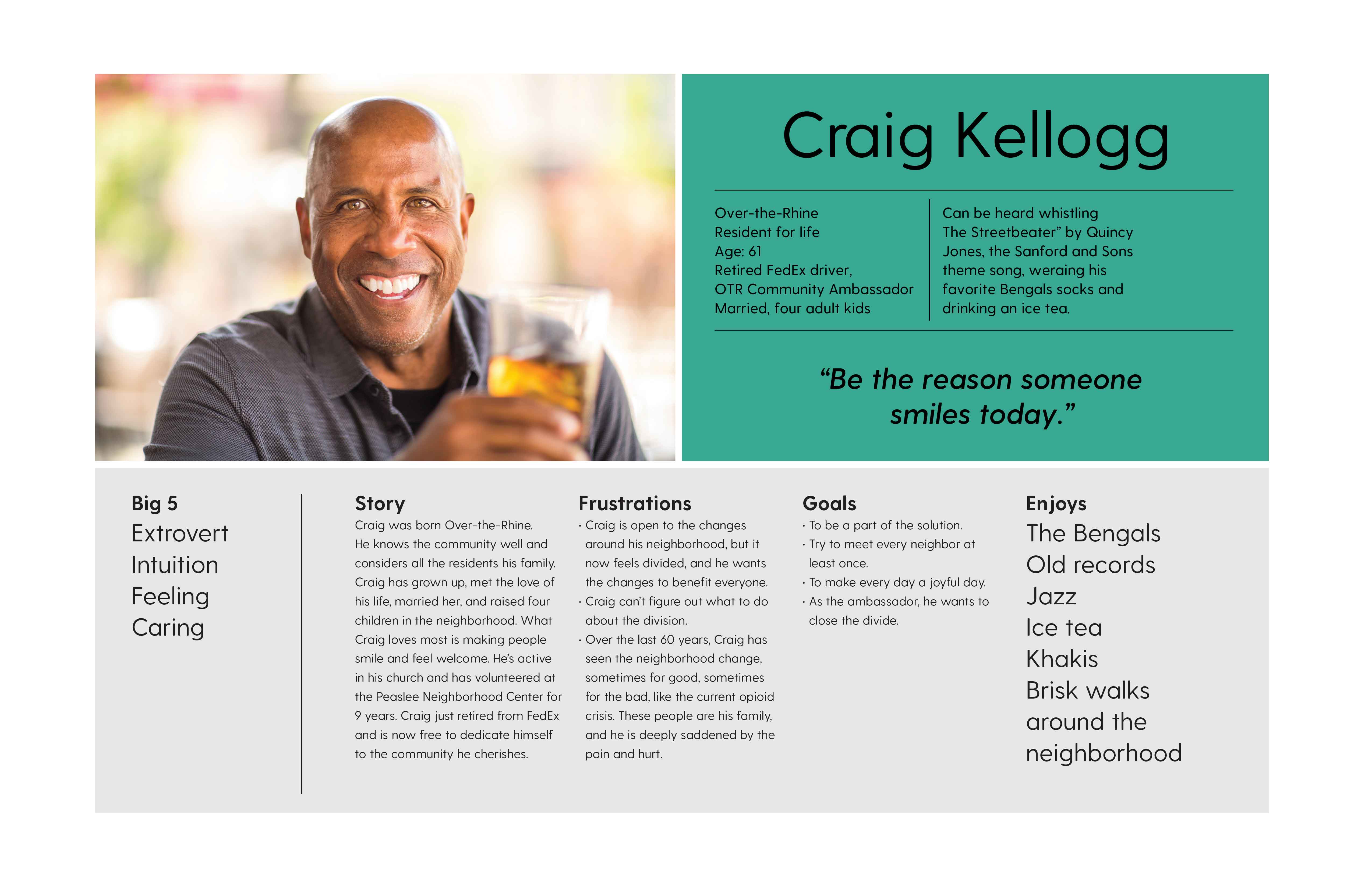
Designing for Belonging for Justine
The team created a suite of design solutions that not only serve long-term residents like Justine, but also new residents and day-visitors. All of the design solutions can be accessed in the new OTR Community App.
OTR Community App
The OTR Community App will serve as a portal to the design solutions. It will offer an interactive version of the existing OTR Chamber of Commerce map where people can click on the various businesses in the neighborhood to gain additional information or search by business type. It also shows arts and entertainment options.
The app will also have community news, events, a coming soon section, and a community bulletin board. These app features keep long-term residents like Justine, and new residents like Anthony, informed about community changes, new businesses, and community services. The changes will no longer feel like sudden unwelcome surprises to long-term residents.
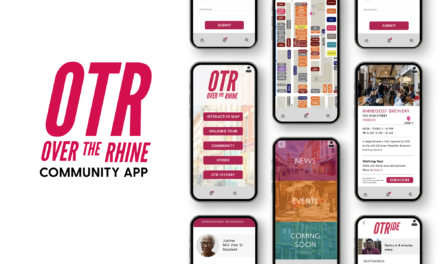
Community Kiosks
Branded double-sided kiosks will offer an interactive map and information on the walking tours, local news, and community events. A QR code will give passer-bys quick access to download the community app. The shared screens in the app and on the kiosks will mirror one another.
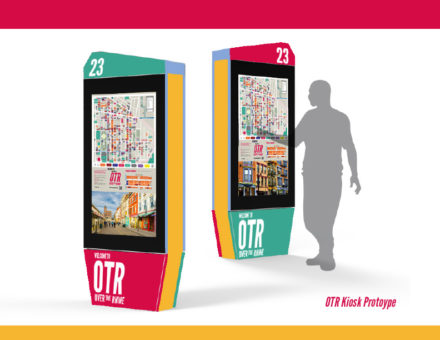
Over-the-Rhine Walking Tour
A walking tour of current and historically significant locations will connect the kiosks. Each location will be outlined in the interactive map and directions to the next stop will be available at each location. Businesses in the neighborhood can tie offers to completing the tour. The app will automatically check off each location by GPS and the tour progress will be saved in the app and can be shown to participating businesses.
The walking tour informs residents and day visitors about the important changes taking place in the neighborhood and long-term residents see community assets beyond the new boutiques being celebrated. Since the tour is digital, new stops can be added as new businesses come into the neighborhood. The tour will be an ever-changing way to keep up with new developments in the neighborhood and app users will receive push notifications when new stops are added.
Community Ambassadors and the AmBUSSador
OTR Ambassadors are trained resident volunteers that work as community liaisons serving residents throughout the community. Ambassadors traverse the neighborhood in the AmBUSSador, an OTR branded vehicle owned and provided by the OTR Chamber of Commerce. Ambassadors bring information about community news and events to residents. As Well, ambassadors man pop-up stops where they meet both visitors and community members. The Ambassadors are also well-informed of local services, so if any of the residents are in crisis, an ambassador such as Craig knows just where to send them for help.
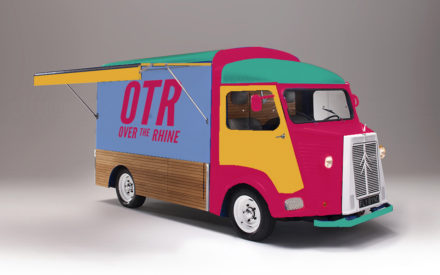

Community Events
Community events focusing on building relationships between long-term and new residents or stakeholders can create avenues for dialogue and mutual belonging. The Let’s Cook Together Local’s Food Festival allows community members, like Justine, to work beside local chefs and share her family’s peach cobbler recipe with her neighbors. Justine’s peach cobbler will make her a neighborhood legend!
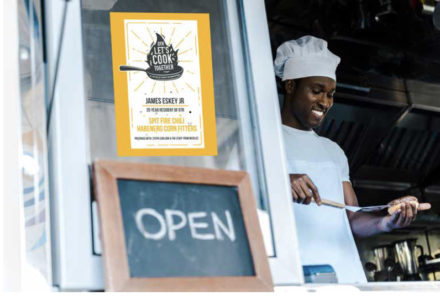
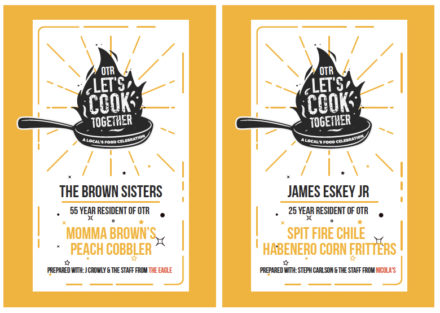
OTRide

One challenge long-term residents are facing is parking. The new tourism in the community potentially means parking further and further away from their home. OTRide is free for residents and allows them quick transport around the neighborhood
for the price of a tip. The pedicabs will also employ local teens as the drivers. This will give long-term residents like Justine an opportunity to see a younger generation of long-term residents and build relationships with local youth. This service also enables new residents to connect with younger long-term residents, a demographic often seen as a part of the community that needs to change rather than valued community members.
The Experience
The team created journey maps to outline the experience of each persona.

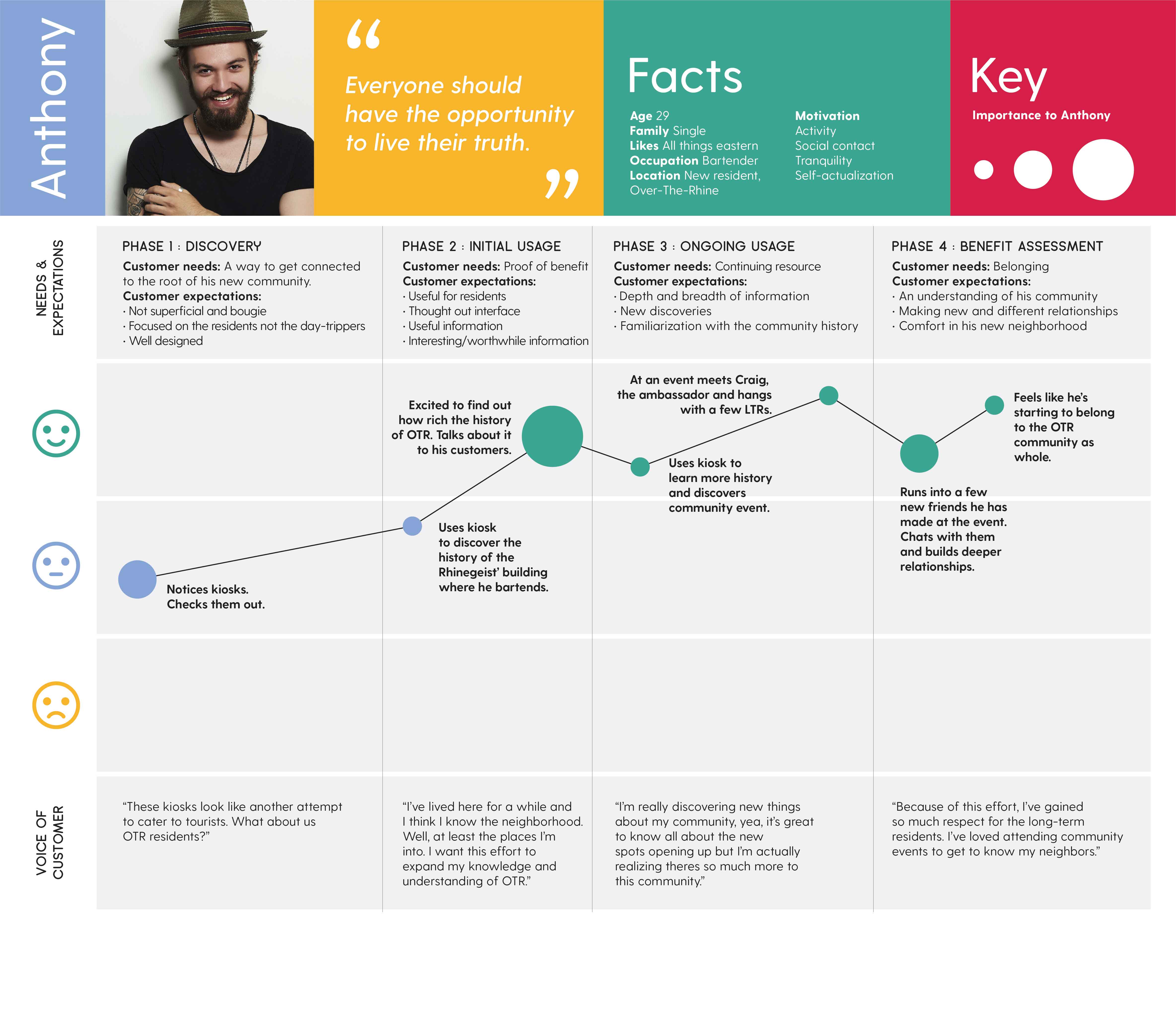
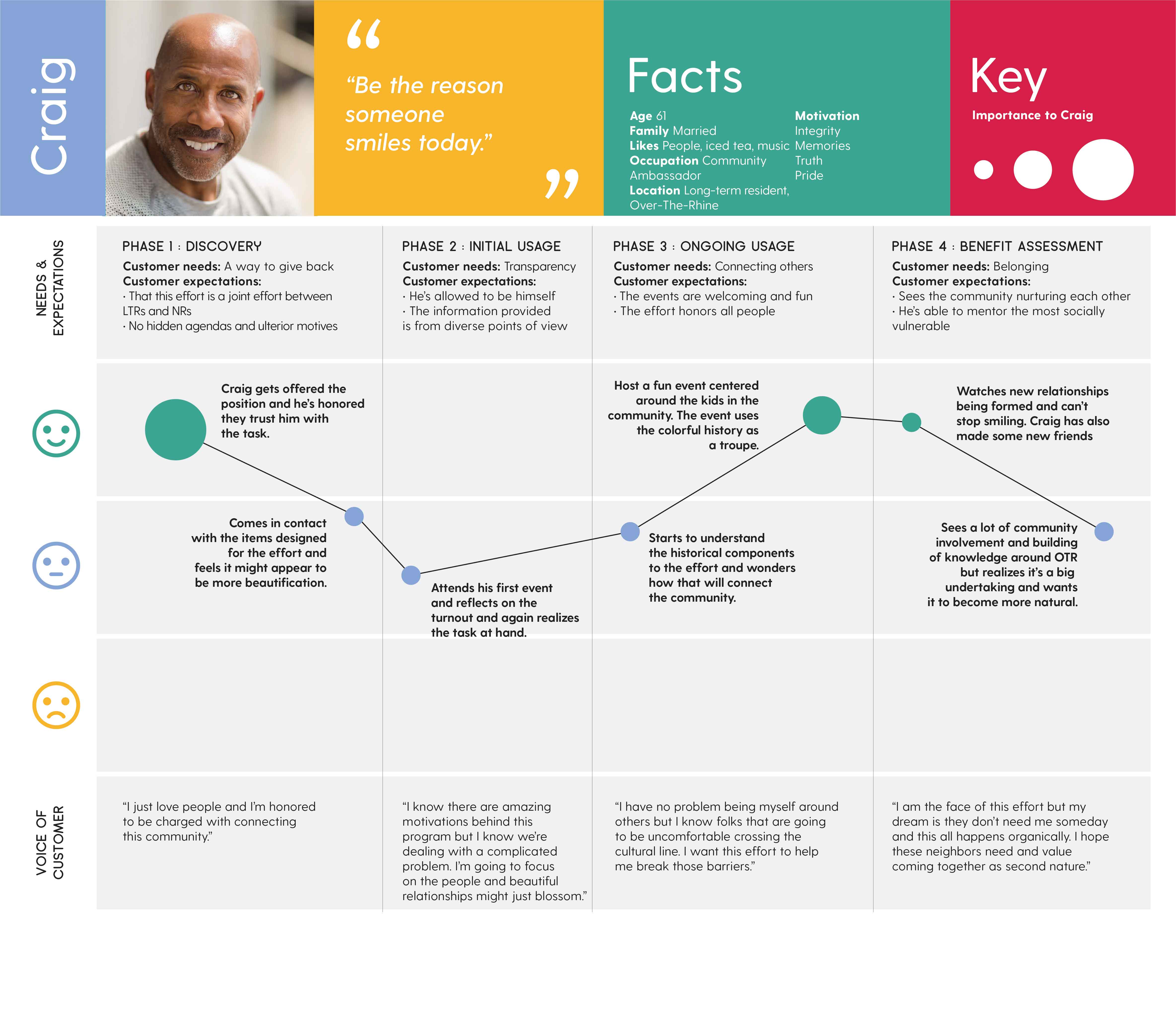
The Design Process
The team completed a 4-hour design sprint inspired by the 5-day model outlined in Sprint: How to Solve Big Problems and Test New Ideas in Just Five Days by Jake Knapp. The sprint was completed by all four team members over Miro. We also used dogfooding and user testing methods detailed in Building For Everyone: Expand Your Market With Design Practices From Google’s Product Inclusion Team by Annie Jean-Baptiste. Development and prototyping of the app were completed using Sketch.
The Design Sprint
User Testing
Each team member did user testing with at least one person. The team completed the testing using the app and a script that inquired about both usability of the app and solicited feedback on the various design solutions. The responses were then coded and used to guide our final designs.
Prototyping
The team used Sketch to create and prototype the app. You can access the working OTR Community App prototype here.
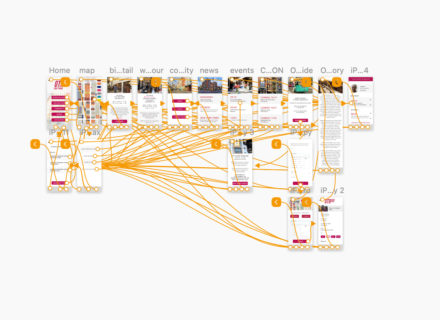
Reference
Brenneman, B. GENTRIFICATION DISGUISED AS URBAN REVITALIZATION. Agora Journal, 02/21/18. Taken from: https://agorajournal.squarespace.com/blog/2018/2/12/gentrification-disguised-as-urban-revitalization
Caproni, E. Cincinnati ranks among luxury housing markets to watch in 2020. Cincinnati Business Courier, 02/21/2020. Taken from: https://www.bizjournals.com/cincinnati/news/2020/02/21/cincinnati-ranks-among-luxury-housing-markets-to.html
John, M. Cincinnati’s Over-the-Rhine confronts decades of gentrification and displacement. The Ground Truth Project, 12/18/2020. Taken from: https://thegroundtruthproject.org/over-the-rhine-street-crime-rooted-in-cincinnatis-history-of-displacement-and-gentrification/
